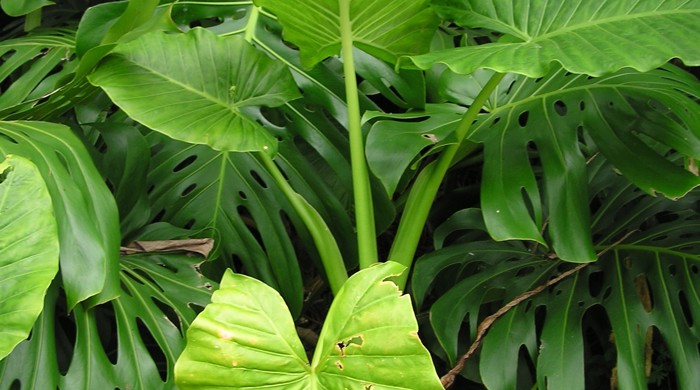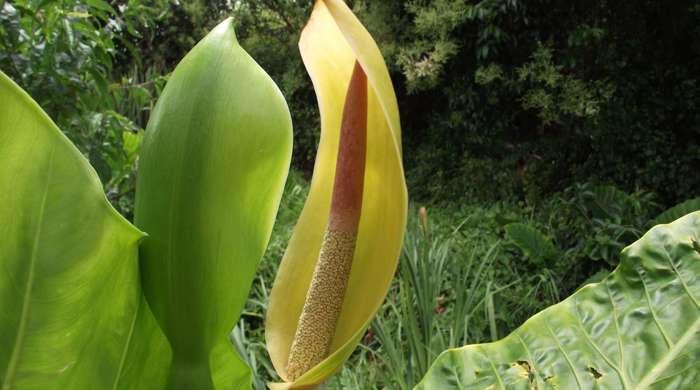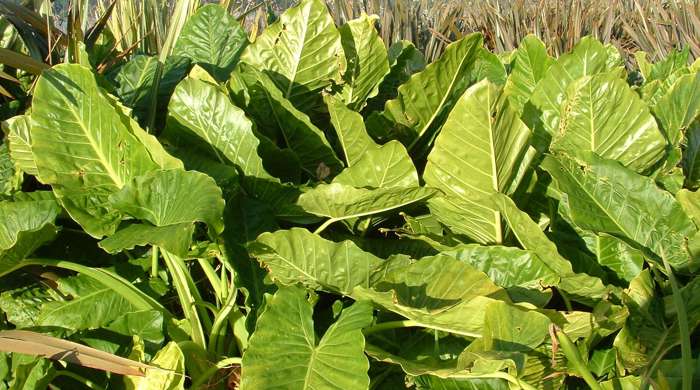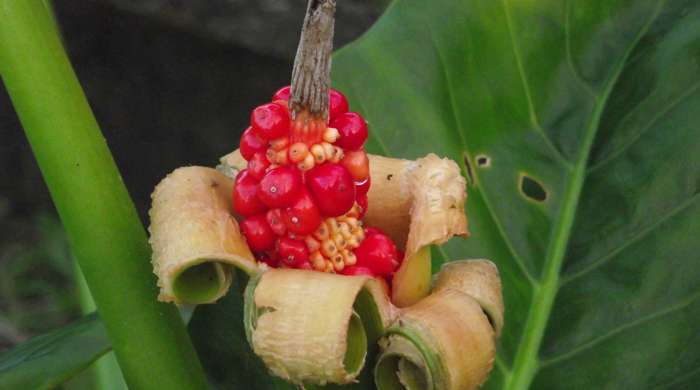Alocasia macrorrhiza syn. A. brisbanensis
Elephant's ear
Also known as:
Spoon lily
Family: Araceae
Origin: Asia, Oceania
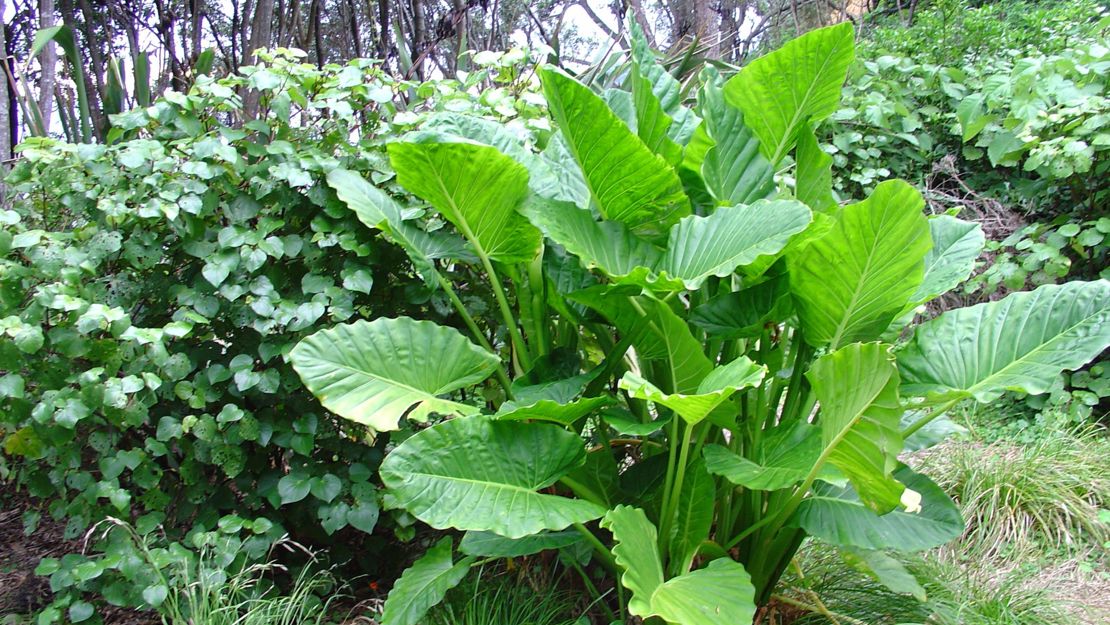
Regional Pest Management Plan (RPMP) status
- Whole region — Sustained control
- Hauraki Gulf Controlled Area Notice pest
General description
Perennial herb < 2 m tall. Stems and rhizomes are thick and fleshy. Leaves are large, < 75 x 50 cm and arrow-shaped. Flowers are small, cream and borne on stalks surrounded by a pale green sheath in summer-autumn. Fruit is fleshy, red/orange, < 1 cm in diameter and ripens in spring.
What you need to know
To help protect our environment, from 1 September 2022:
- You must not breed, distribute, release or sell elephant's ear within the Auckland region.
- You must not plant elephant's ear within the Auckland region, unless you are transferring an existing plant on your land to another location within the boundaries of the same property.
- You must destroy any elephant's ear on land that you occupy if it has been planted in breach of the above rules and you are directed to do so by an authorised person.
Habitats
Damp habitats, wetlands, riparian margins, disturbed forest, pasture.
Dispersal
Seeds possibly dispersed by birds and water. Vegetative spread from tuber fragments. Human mediated dispersal through dumping of garden waste.
Impact on environment
Forms dense stands, displacing native plants and invading pasture. Poisonous. Contact with the plant can cause skin and eye irritation.
Control
Site Management
Follow up treated areas 3 times per year. Encourage natural regeneration of native plants or replant treated areas where possible after 2-3 treatments to establish dense ground cover and minimise reinvasion.
Recommended approaches
Physical control
Method: Dig out.
Plant parts requiring disposal: Rhizomes and tubers, and seeds if practical.
Disposal options: Small amounts can be rotted in a covered water barrel or remove to greenwaste or landfill.
Biocontrol
Biocontrol is currently not available for this species.
Community agrichemical control recommendations
No qualifications:
For small infestations on terrestrial sites: Cut stump and paste freshly cut base of stems with metsulfuron gel.
For small infestations on aquatic sites: Cut stump and paste freshly cut base of stems with double strength glyphosate gel.
Basic Growsafe certified:
For medium infestations on terrestrial sites: Cut stump and spray freshly cut base with 1g metsulfuron-methyl per 1 L of water.
For medium infestations on aquatic sites: Cut stump and spray freshly cut base with 250ml glyphosate green per 1 L of water.
Certified Handler/Experienced agrichemical user:
For large infestations on terrestrial sites: Cut stump and spray freshly cut base with 1g metsulfuron per 1 L of water.
For large infestations on aquatic sites: Cut stump and spray freshly cut base with 250ml glyphosate green per 1 L of water.
Safety notes
Contact with the plant can cause skin and eye irritation.
Caution: When using any herbicide or pesticide please read the label thoroughly to ensure that all instructions and safety requirements are followed.
